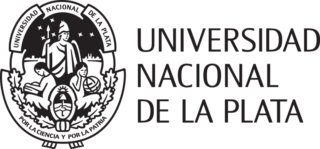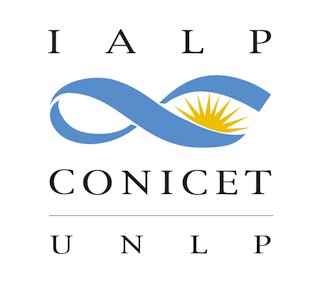Dear colleagues,
We are delighted to make the first announcement for SuperVirtual 2023.
The meeting will be held in virtual mode from November 6th to 10th,
2023.
As in SuperVirtual 2022, SuperVirtual 2023 will cover both
core-collapse and thermonuclear supernovae, as well as some of the
novel transients that are being found by current surveys. While in
person conferences are now thankfully resuming, we hope that this
online-only meeting will continue to provide a useful addition. In
particular we intend for SuperVirtual 2023 to offer an opportunity to
attendees who have travel or financial restrictions. SuperVirtual 2023
aims to organise a conference that is as inclusive and participatory
as possible. It is planned that both the selection of focus topics and
that of contributed speakers will make significant use of participant
input – more details of this will be circulated at a later date.
Please note that the time zone of the conference has been changed from
2022, and for this year we will start each day at 14:00 UTC. This is
to allow those in unfavourable time zones last year to connect at a
more comfortable time.
For more information, please visit the conference website.
https://sites.google.com/view/supervirtual2023/
Organization committee
Joe Anderson (European Southern Observatory, Chile)
Melina Cecilia Bersten (National University of La Plata, Argentina)
Janet Ting-Wan Chen (National Central University, Taiwan)
Morgan Fraser (University College Dublin, Ireland)
Kate Maguire (Trinity College Dublin, Ireland)
Raffaella Margutti (University of California, Berkeley, USA)
Takashi Moriya (National Astronomical Observatory of Japan, Japan)
Ken Shen (University of California, Berkeley, USA)
Scientific Rationale
Wide-field transient surveys are currently delivering large
statistical samples of supernovae (SNe), while also discovering
peculiar and exotic events. New and up-coming facilities will provide
another leap in sample sizes or afford new observations at distinct
wavelengths and out to late epochs. Samples of ‘standard’ supernovae
enable strong constraints on their progenitor properties and explosion
mechanisms. Meanwhile, the discovery of peculiar explosions often
challenges our application of standard SN physics to such emerging
classes. In addition, the early detection of nearby transients can
lead to a plethora of constraints on progenitors, explosion
mechanisms, and stellar evolution – as exemplified by the recent case
of SN2023ixf. SuperVirtual 2023 will address many of these
developments – providing a review of SN observations and physics,
while exploring the limits of our current understanding of the
processes driving SN diversity.
There is now strong consensus that the majority of hydrogen-rich SNeII
arise from massive red supergiant stars. However, there is still
disagreement on the exact mapping from progenitor and explosion
properties to transient characteristics. The last decade has seen
mounting evidence that at least a significant fraction of
stripped-envelope-SNe arise from binary systems, although which
envelope-mass stripping process dominates for which progenitors is
still debated. In addition, it now appears that ejecta-CSM interaction
is not only important for our understanding of narrow-line SNeIIn, but
may also be critical for many other SN types – especially at early
times in their evolution. This understanding is being enhanced by
advances in survey and follow up capabilities – observations of which
will be discussed at this meeting.
Knowledge of the progenitors and explosion mechanisms of SNeIa
continues to grow, with larger statistical samples in addition to
higher quality data of individual explosions. Such data includes
observations within hrs/days of explosion, affording investigation
into the prevelance of early ‘excess emission’ that constrains the
progenitor scenario. Very late-time observations constrain the
isotopic abundances produced in SNeIa, thus constraing the explosion
mechanism. However, it is still unclear which progenitor systems
produce the bulk of the SNIa population. This conference will provide
a platform to discuss new observations, progenitor and explosion
modelling, and possible future strategies to constrain the SNIa
phenomenon.
The number of ‘non-standard’ SNe also continues to grow. Samples now
exist of exotic explosions such as superluminous SNe (SLSNe) and
SNeIbn. However, in the former it is still unclear which powering
mechanism enables such large luminosities, while the properties of the
latter challenge our understanding of late-time stellar evolution.
Meanwhile, the diversity and number of ‘peculiar’ thermonuclear SNe
continues to grow – from SNIax to .Ia explosions. SuperVirtual 2023
will motivate discussion on the state of the art of the explosion
physics and progenitor evolution required to explain these diverse
events. There are also a number of classes where only a few
well-observed events exist. ‘Fast transients’ (coming in different
flavours with different nomenclature – e.g. ‘FBOTs’) have timescales
making them difficult to observe, but additionally have properties
that are difficult to understand without invoking exotic physical
scenarios. One of the most recent additions to the SN family is the
SNIcn class, which further stretches the family of SNe that are
significantly affected by ejecta-CSM interaction. Finally, together
with these new classes, a larger number of SNe are discovered with
specific features that also require an extension of any standard SN
model – e.g. short timescale modulations in light curve shapes.
A full understanding of the SN phenomenon and its diversity is only
possible through comparing transient observations with predictions
from explosion models and stellar evolution. At SuperVirtual 2023, SN
observations will be confronted with the latest modelling of stellar
explosions to survey the current landscape of SNe, their numerous
different classes, and their progenitor populations.
SuperVirtual 2023 aims to organise a conference that is as inclusive
and participatory as possible. It is planned that both the selection
of focus topics and that of contributed speakers will make significant
use of participant input – more details of this will be circulated at
a later date.


